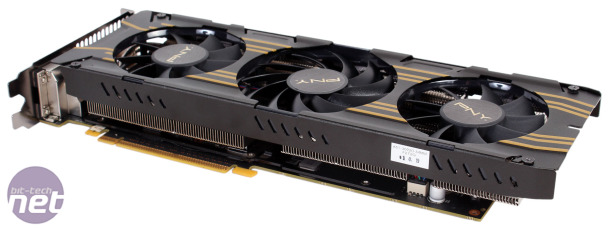Overclocking
Using EVGA's excellent Precision X tool, we began overclocking as ever by maxing out the temperature and power limits to 95°C and 106 percent respectively. We also increased the card's voltage by 38mV, the maximum permitted. Even so, we were initially unsure as to how much headroom there was left on the GTX 780 XLR8, given that we only managed to get our stock sample to 1,023MHz and this card ships with a base clock of 1,006MHz as standard.To our surprise (and delight), however, we managed to add a further 14 percent onto the base clock, taking it to a massive 1,146MHz. This brought the boost clock up to 1,199MHz, and we occasionally saw the core reach 1,228MHz under load. This is a phenomenal result, as it's actually a 33 percent higher clock speed than the vanilla GTX 780's.
The Samsung memory chips also proved very friendly when it came to overclocking, as we were able to push these up to an awesome speed of 7.8GHz effective, which is another large increase of 23 percent. Any higher than this, however, and we almost instantly saw errors, so we'd probably tone this down a little were we using it long term. Nevertheless, it's a great result and the card survived plenty of stress testing at these frequencies.
Our hefty overclocks meant that the GTX 780 XLR8 actually managed to outperform the GTX 780 Ti, a card that's close to £600, by up to 5 percent. It also meant it was able to put a greater distance between itself and the even more expensive GTX Titan, except in Crysis 3 where only its average framerate is higher. Even better, fan speeds and the cards temperature only rose by 1 percent and 1°C respectively. Naturally, mileage may vary between cards, but you can expect the GPUs in the GTX 780 XLR8 to have been binned to a fairly high level in order for PNY to confidently give the card such a large factory overclock and a three year warranty.

MSI MPG Velox 100R Chassis Review
October 14 2021 | 15:04










Want to comment? Please log in.